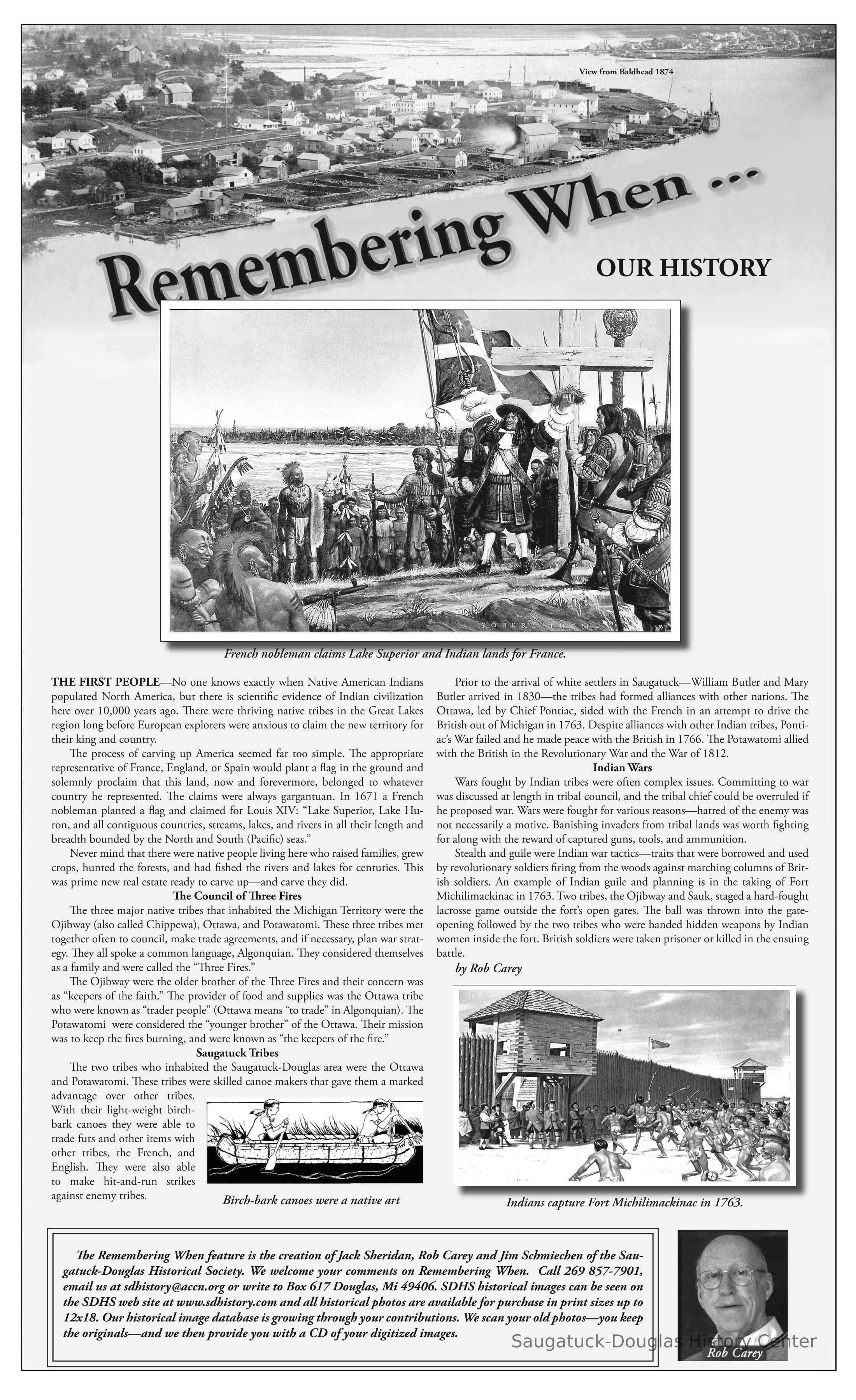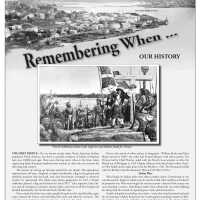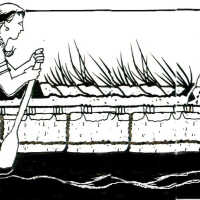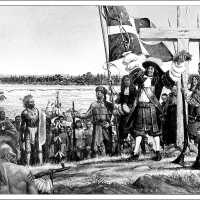The First People

2021.87.80
THE FIRST PEOPLE—No one knows exactly when Native American Indians populated North America, but there is scientific evidence of Indian civilization here over 10,000 years ago. There were thriving native tribes in the Great Lakes region long before European explorers were anxious to claim the new territory for their king and country. The process of carving up America seemed far too simple. The appropriate representative of France, England, or Spain would plant a flag in the ground and solemnly proclaim that this land, now and forevermore, belonged to whatever country he represented. The claims were always gargantuan. In 1671 a French nobleman planted a flag and claimed for Louis XIV: “Lake Superior, Lake Huron, and all contiguous countries, streams, lakes, and rivers in all their length and breadth bounded by the North and South (Pacific) seas.” Never mind that there were native people living here who raised families, grew crops, hunted the forests, and had fished the rivers and lakes for centuries. This was prime new real estate ready to carve up—and carve they did. The Council of Three Fires The three major native tribes that inhabited the Michigan Territory were the Ojibway (also called Chippewa), Ottawa, and Potawatomi. These three tribes met together often to council, make trade agreements, and if necessary, plan war strategy. They all spoke a common language, Algonquian. They considered themselves as a family and were called the “Three Fires.” The Ojibway were the older brother of the Three Fires and their concern was as “keepers of the faith.” The provider of food and supplies was the Ottawa tribe who were known as “trader people” (Ottawa means “to trade” in Algonquian). The Potawatomi were considered the “younger brother” of the Ottawa. Their mission was to keep the fires burning, and were known as “the keepers of the fire.” Saugatuck Tribes The two tribes who inhabited the Saugatuck-Douglas area were the Ottawa and Potawatomi. These tribes were skilled canoe makers that gave them a marked advantage over other tribes. With their light-weight birchbark canoes they were able to trade furs and other items with other tribes, the French, and English. They were also able to make hit-and-run strikes against enemy tribes. Prior to the arrival of white settlers in Saugatuck—William Butler and Mary Butler arrived in 1830—the tribes had formed alliances with other nations. The Ottawa, led by Chief Pontiac, sided with the French in an attempt to drive the British out of Michigan in 1763. Despite alliances with other Indian tribes, Pontiac’s War failed and he made peace with the British in 1766. The Potawatomi allied with the British in the Revolutionary War and the War of 1812. Indian Wars Wars fought by Indian tribes were often complex issues. Committing to war was discussed at length in tribal council, and the tribal chief could be overruled if he proposed war. Wars were fought for various reasons—hatred of the enemy was not necessarily a motive. Banishing invaders from tribal lands was worth fighting for along with the reward of captured guns, tools, and ammunition. Stealth and guile were Indian war tactics—traits that were borrowed and used by revolutionary soldiers firing from the woods against marching columns of British soldiers. An example of Indian guile and planning is in the taking of Fort Michilimackinac in 1763. Two tribes, the Ojibway and Sauk, staged a hard-fought lacrosse game outside the fort’s open gates. The ball was thrown into the gate-opening followed by the two tribes who were handed hidden weapons by Indian women inside the fort. British soldiers were taken prisoner or killed in the ensuing battle. by Rob Carey
Remembering When0001 Anishinabek/Ojibwe/Odawa/Bodéwadmi
Winthers, Sally
Digital data in CatalogIt
Carey, Rob 1928-2019Sheridan, John "Jack" O. 1938-Schmiechen, James A.Butler, William Gay 1799-1857
Local Observer
01/01/2022
11/18/2023



![Indians capture Fort Michilimackinac in 1763. [The men are playing a game, not fighting.]; Fort.jpg Source unknown.](https://d3f1jyudfg58oi.cloudfront.net/4124/image/c087f510-6b3f-11ec-8ad1-5da95aca2123-tTjAZxH.tn.jpg)
